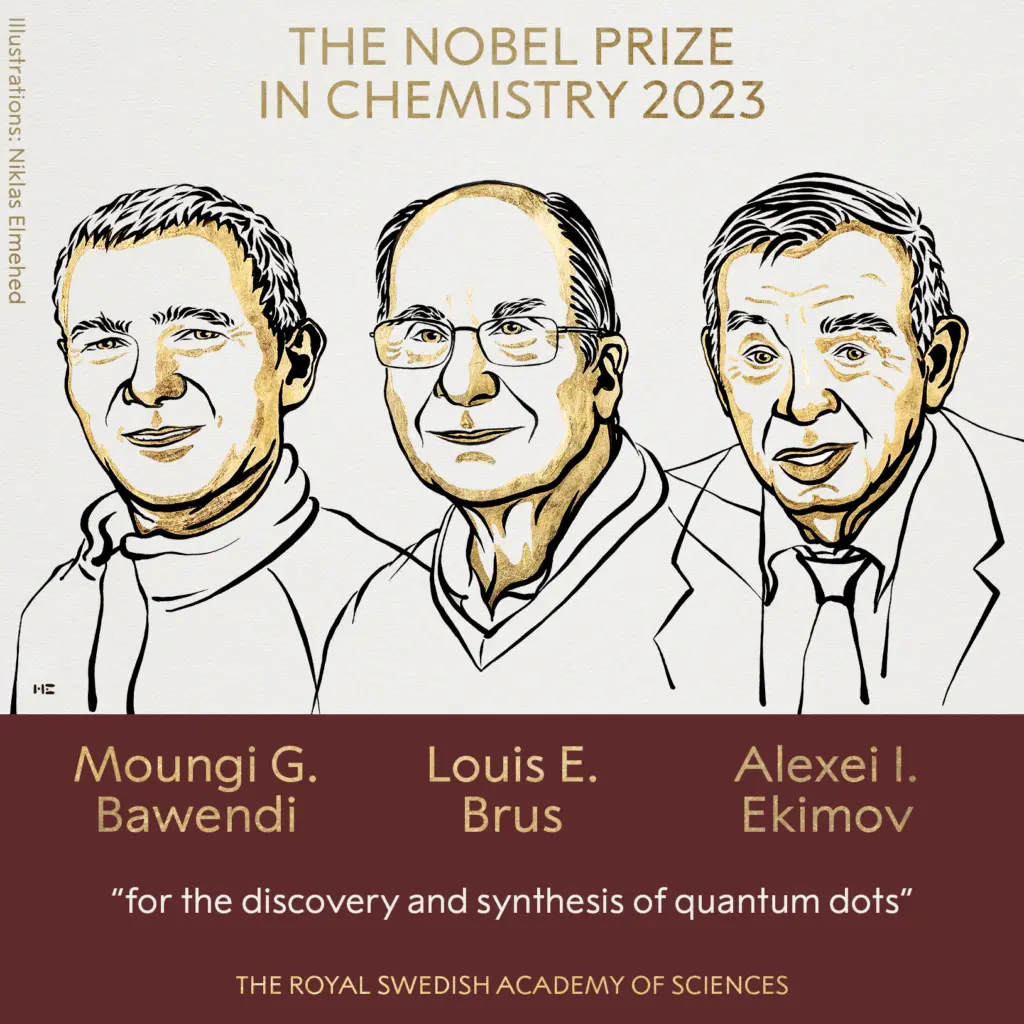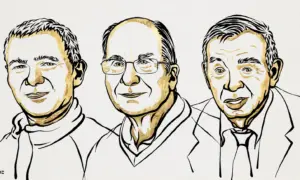The 2023 Nobel Prize in Chemistry has been awarded jointly to Professor Mounji Bawendi of MIT, Professor Emeritus Louis Bruce of Columbia University, and Alexei Ekimov for their significant contributions to the discovery and development of quantum dots, defined as semiconductor crystals with sizes less than 10 nanometers.

Quantum dots were first discovered by Ekimov in 1980 and later by Bruce in 1982. Bawendi was among the pioneering researchers who delved into colloidal quantum dots. Bruce’s extensive work at AT&T Bell Laboratories over 23 years laid the foundation for nanocrystal research. Bawendi, originally from France and Tunisia, studied under Professor Bruce before joining MIT, while Ekimov transitioned from the former Soviet Union to the United States, currently working at Nanocrystal Technology.
The groundbreaking discovery revolved around the observation that the color of light emitted by quantum dots varies with their size, with the emitted light’s wavelength being solely determined by the quantum dot’s size. This principle allows for the precise control of colors by producing quantum dots of different sizes, enabling the creation of a full spectrum of colors.
Quantum dots are categorized into colloidal quantum dots, produced using a chemical solution process, and self-assembled quantum dots, grown on substrates via chemical vapor deposition. Colloidal quantum dots, comprising approximately 50 atoms and measuring 1 to 10 nanometers, can be easily incorporated into various materials using cost-effective printing or coating methods. They offer excellent color quality and a wider color gamut than needed for high-definition TV, without the whitening issue often associated with OLEDs.
The practical applications of quantum dots were first seen in TVs, enhancing color accuracy and expanding the color range efficiently, while also enabling higher TV brightness without increased power consumption. Quantum dots have also found uses in LED lamps, boasting a longer lifespan compared to organic materials like OLEDs and lower production costs.
Quantum dots are used in various fields, from computer monitors and TVs based on QLED technology to nuanced LED lighting. In biochemistry and medicine, they are employed for mapping living tissue.

